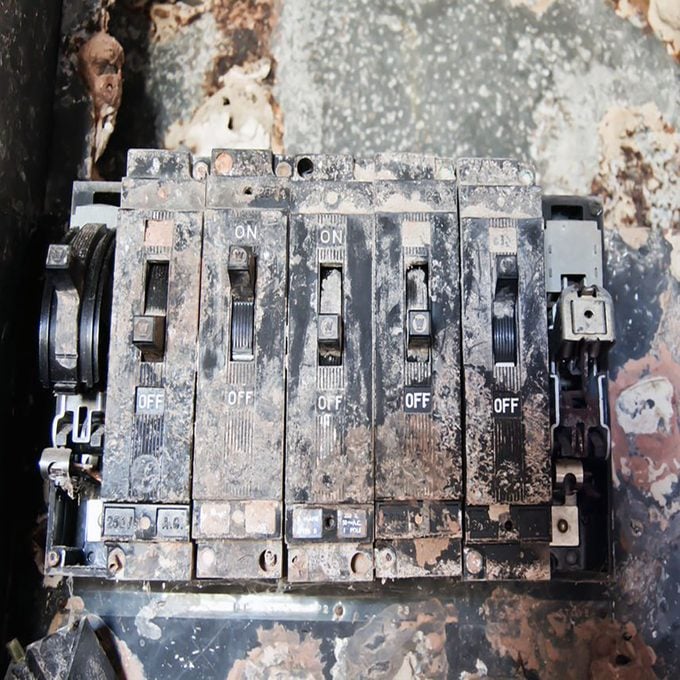Can an electrical panel be installed in a bathroom? Find out the answer from an electrical inspector.
Electrical Panels In A Bathroom

Question: Can an electrical panel be installed in a bathroom?
Answer:
No. All electrical conductors, equipment, light fixtures and so on must be identified for use in the operating environment in which they will be installed (indoor dry locations, indoor or outdoor wet locations, hazardous [explosive] location inside a vehicle paint spray booth, etc.). There is a basic rule in the code that says unless otherwise approved and marked accordingly, no electrical conductors or equipment are permitted to be installed in damp or wet locations, where exposed to gases, fumes, vapors, liquids, other deteriorating agents, or where exposed to excessive temperatures. Electrical conductors and equipment that are rated for dry, indoor locations free of any corrosive effects obviously would be the most economical to purchase. Do they make equipment for corrosive locations, such as inside your favorite drive-through car wash? Yes, but it’s going to be much more expensive. It’s always best to plan and layout every installation in such a way that the electrical equipment is located where it is protected and kept dry, and then minimize the quantity of electrical wiring that is extended into the less desirable locations.
Always check with your local electrical inspector about the specific code requirements in your area.
Question answered by John Williamson, Chief Electrical Inspector, Minnesota Department of Labor and Industry
John Williamson has been in the electrical industry for 40 years and is a licensed master electrician and certified building official. John has worked for the state of Minnesota for over 23 years and is the Chief Electrical Inspector. For the past 25 years John has also provided electrical code consultation to various book and magazine publishers
Find out how much working clearance is required in and around electrical panels.



















